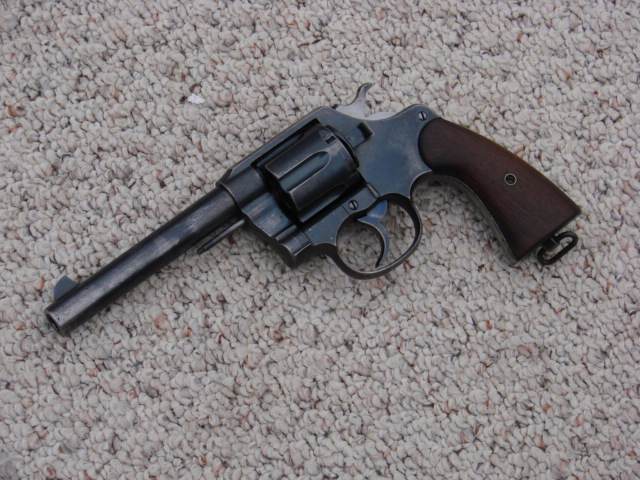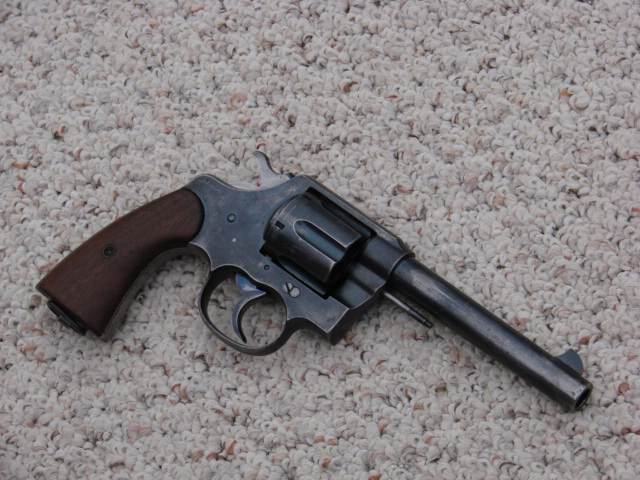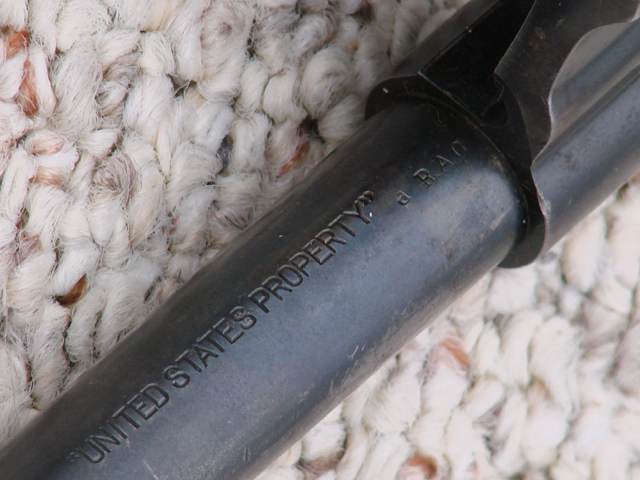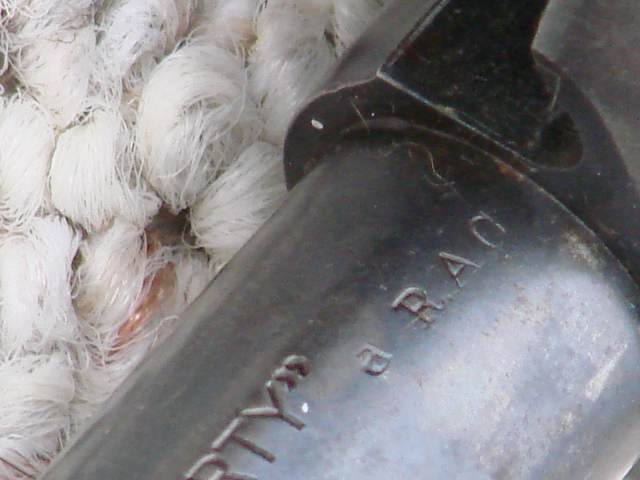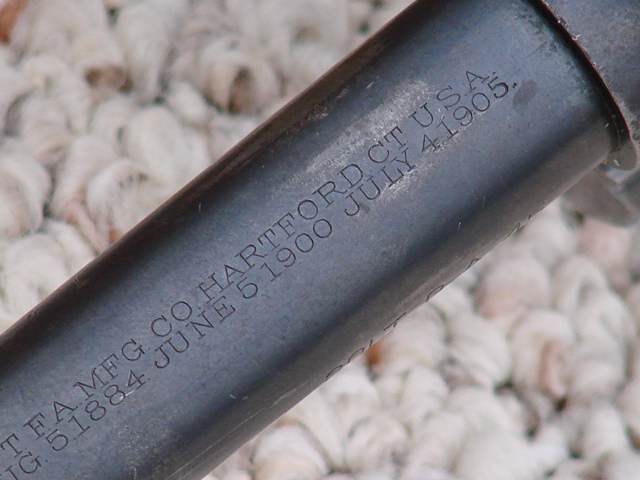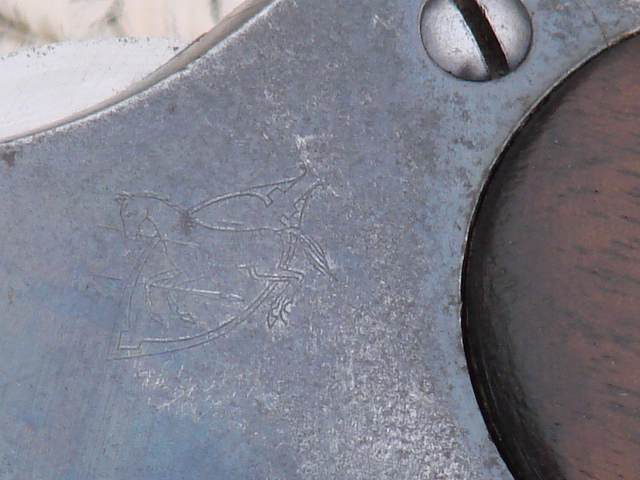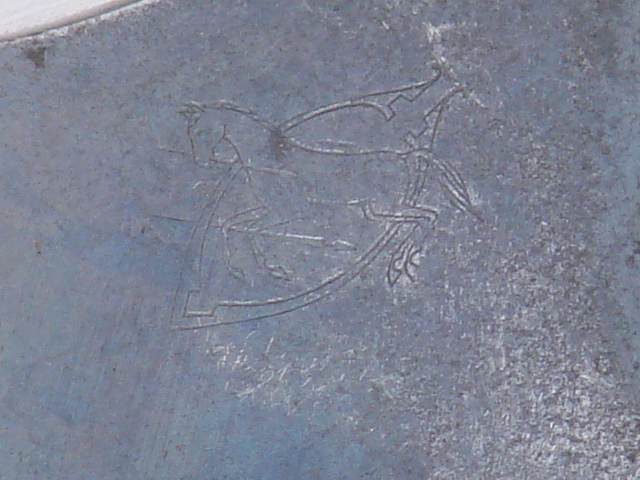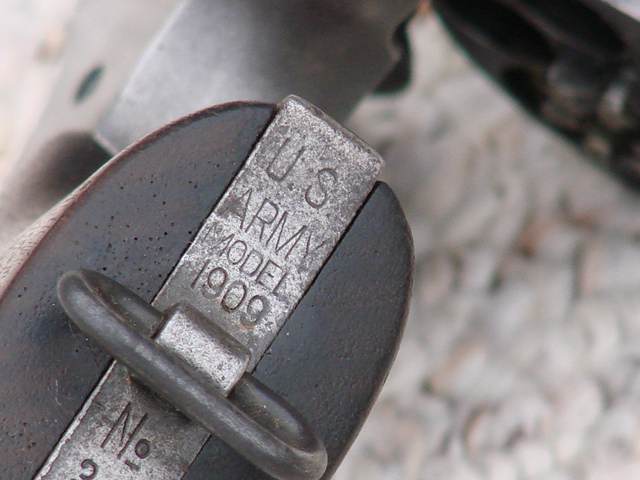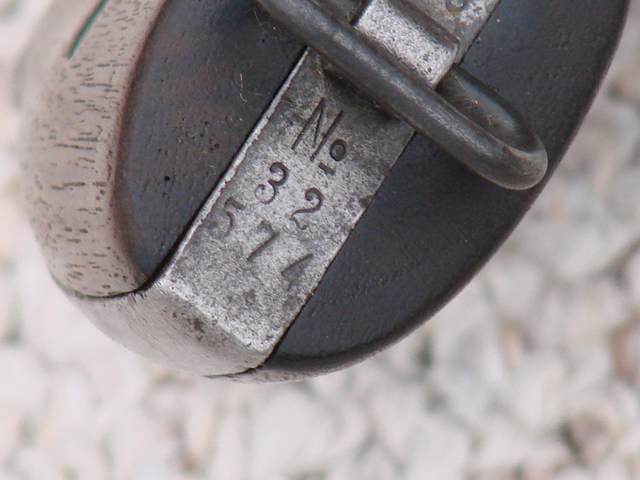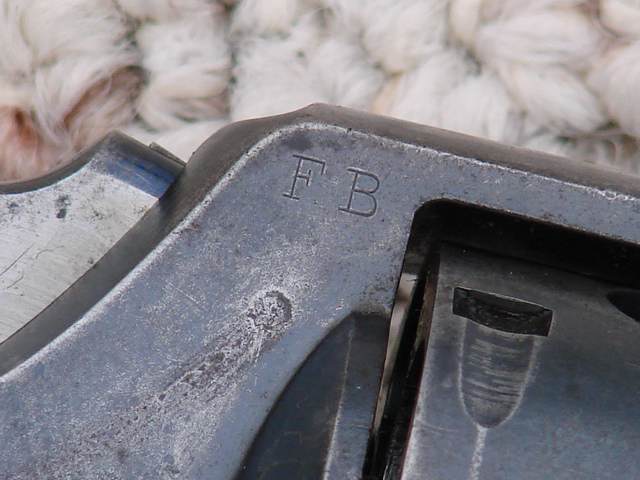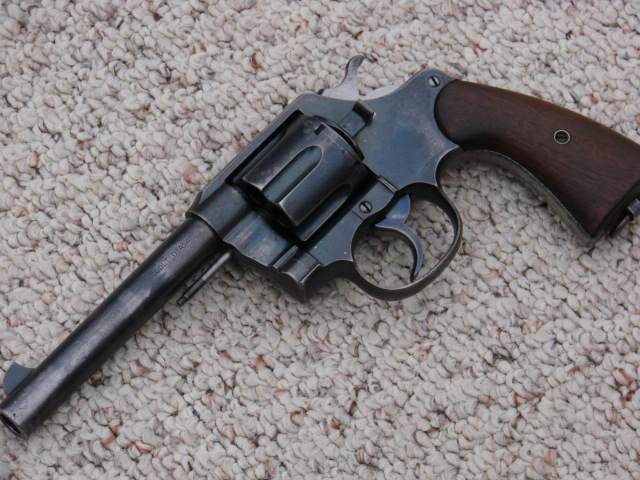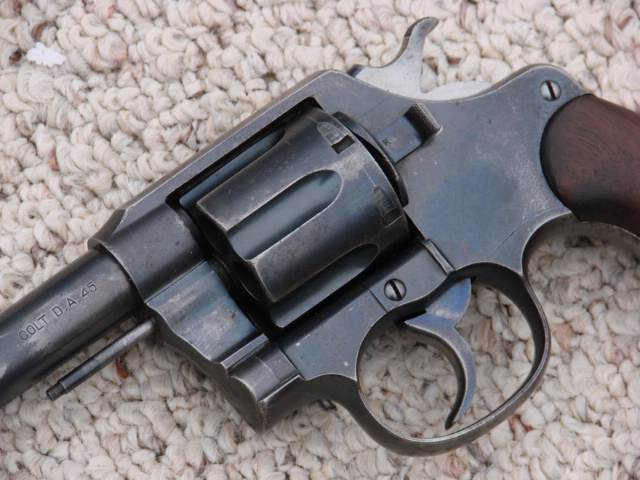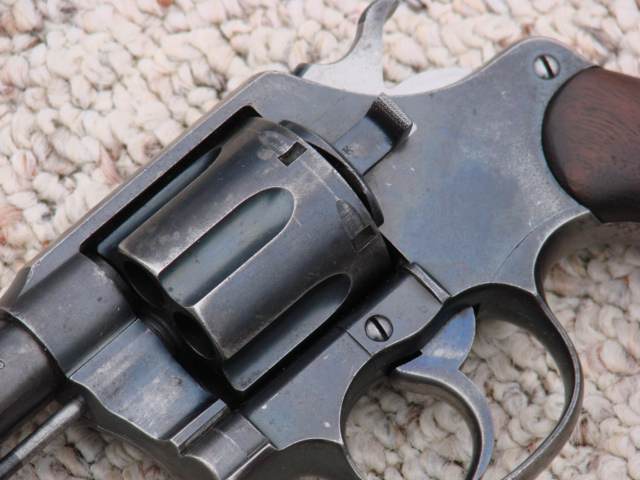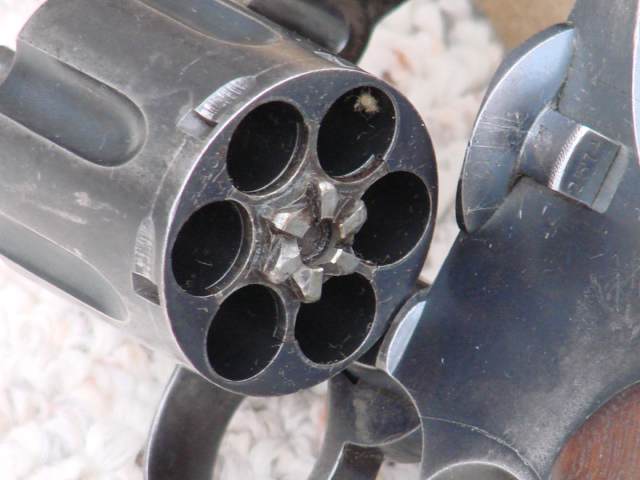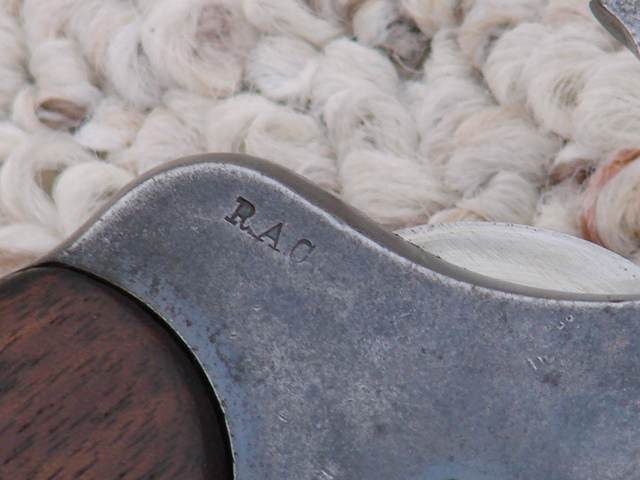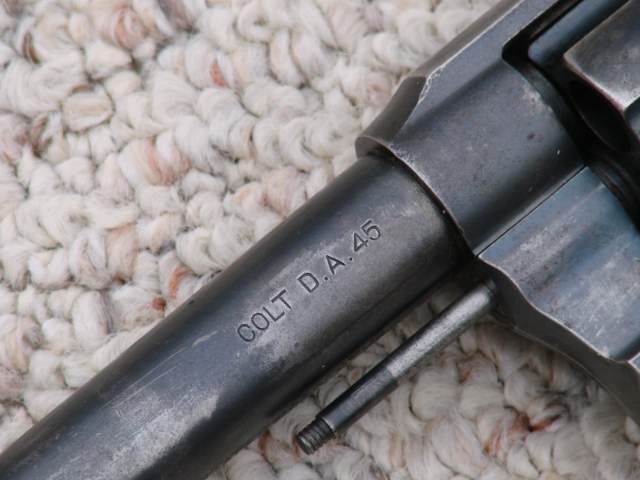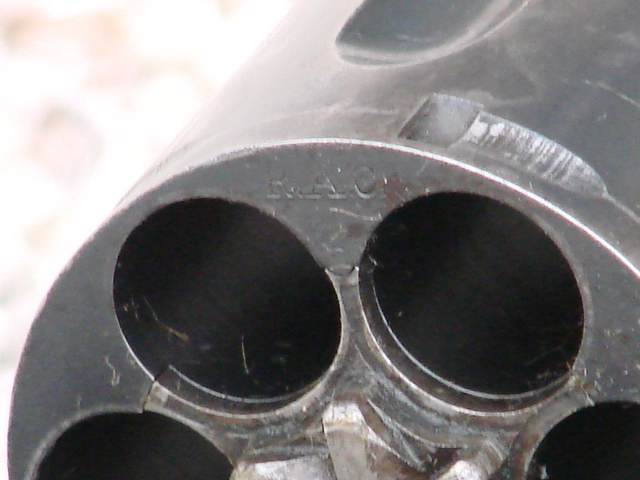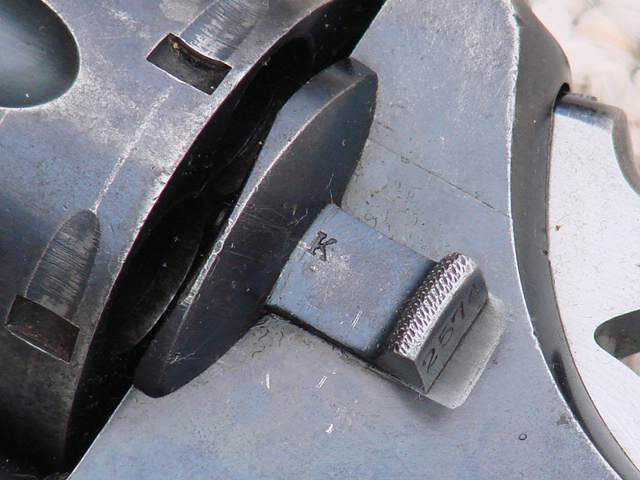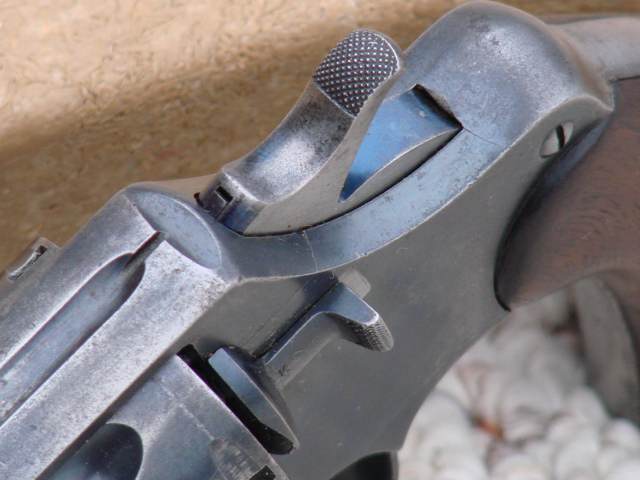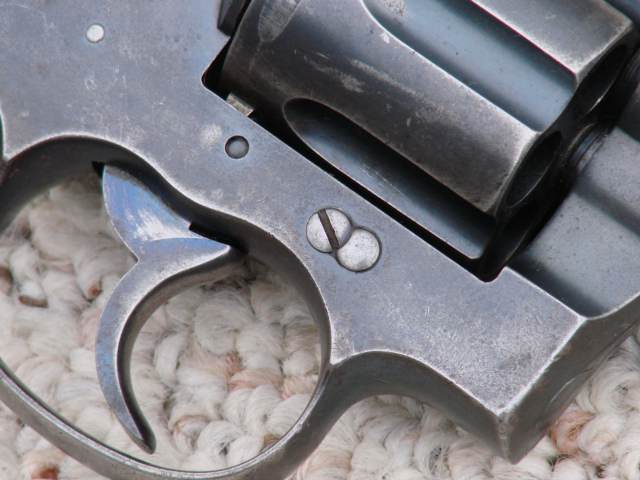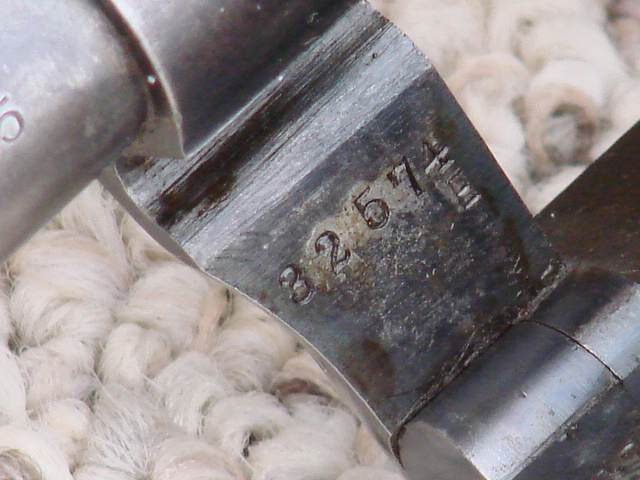COLT NEW SERVICE MODEL 1909 IN .455 WEBLEY
This gun is a Colt New Service Civilian Model 1909 revolver, chambered for the .455 cartridge. Its serial# 120XXX indicates it was made in 1916.
Made from 1897 to 1943, the New Service was the largest of all metallic cartridge Colt revolvers. It is also the first Colt with swing-out cylinder to have the cylinder turning clockwise. A total of about 356.000 were produced.
This is an extremely sturdy revolver that has proved its qualities in all parts of the world during the two world wars. Some experts like Flayderman and Wilson, do not always agree on a few details and on production dates.
The New Service was available in the calibers .38 Sp, 38-40 WCF, 38-44, .44 Russian, .44 S&W Sp, 357 Mag, .44-40 WCF, .45 Govt, (45 Long Colt), .45 Auto (45 ACP mod 1917 with clips), .45 Auto Rim, as well as the British calibers .450,.455 and .476.
Available barrel lengths are 4", 4 1/2",5", 5 1/2", 6" and 7 1/2". There are many minor variants like for instance the narrower butt profile of the US Marine Corps model.
It was the first revolver to make a score of 100 points at the international shooting contest of Camp Perry on Nov 15, 1907, establishing a world record.
The military version in use in the US Army was in the .45 Govt caliber (except for the 1917) and had smooth walnut grips. It has always a 5 1/2" barrel.
According to some authors, the black ebonite grips with the Colt logo on top were made for the civilian models only, but this has not been established for all revolvers, principally those sold to Canada. Other authors claim that ebonite grips were used on the early models, below serial# 50000.
So this specimen is a "civilian" 1909, featuring ebonite grips. It is chambered for the .455 caliber and still shows a few half gone British marks, such as the Broad Arrow, UE 19, and crowned V on the frame. There are no proof stamps on the cylinder chambers.
This particular revolver has a personal story, which I'm going to share:
By the time of the Verdun and Somme disasters in 1916, both the French and British armies faced an important lack of handguns. The makers simply couldn't meet the rhythm of destructions and losses on the field. France has then turned to neutral Spain for the delivery of thousands of "Spanish 92's" in 8 Lebel caliber, while Britain, before purchasing in Spain, ordered over 200,000 handguns in the USA, in calibers .455 and .38.
Even a giant as Colt was unable to fulfil such a huge order in such a short delay, especially due to the fact that the US Army was about to enter the war in Europe. All the possible was done, however, and they managed to deliver a contingent of 107,000 revolvers in the .455 and .38 calibers, among which also a number of civilian versions. By landing in the U.K, the guns were given military acceptance marks but were directly sent to the field, without being proofed first according to the British laws.
This revolver was part of that contingent, and saw service by troops of the Commonwealth, most probably Canadians or Australians operating in the area of Courtrai, Flanders.
After the Great War, the gun seems to have been sent back to Canada, where it was probably refreshed and kept in stock by the Canadian Army. Since it is not marked RCMP, it was never used by the Royal Canadian Mounted Police.
During WW2, my father, who was an estafette in the 1st Lancers Rgt, was taken prisoner in the area of Spa and spent 3 years and a half at the StaLag ll C at Stettin, Poland. He was sent back home by the Germans themselves in the fall of 1943 for medical reasons, and a few months later he enrolled in the "Groupe G", which was a Resistance and Sabotage group founded by Jean Burgers and supplied in weapons, explosives and other material by the Canadian Army. He was given the revolver and participated to different actions, among which part of the sabotages called "the Grande Coupure" (literally the Big Cut, a serial of sabotages of the Belgian railroads and electrical supply installations, that paralysed the whole German communication and supply system on the Western front).
After the war, the Canadians left the gun behind, and Dad "forgot" to declare it to the Belgian authorities. He gave it to me when I was 15, short before he passed away, and that revolver became the first item of my collection.
A quite bizarre story about the liquidation of 2 traitors has long been spoken about in the family, though Dad has never been very talkative on that point. When questions about that story were asked, he always had urgent things to do in the basement or in the attic...
If the revolver has indeed been made for the civilian market, it should have been given a nice "glossy blue" finish, which is much nicer than the matt blue of the military models. But I guess that the British or the Canadians have soon given it a matt "war black" finish, of which it still retains traces among its mottled dark grey patina. I regret it can't talk, because the life of a particular gun is quite difficult to trace in military archives that are not always very accessible.
Marcel
Colt new service1909
This historic revolver was manufactured for the US Army in 1911. The US Army inspector's initials (R.A.C.; Rinaldo A. Carr) are stamped clearly above the grips on the right side and on the cylinder.
It handles the famous 45 Long Colt cartridge.
It saw military service as a sidearm for the US Army during WWI.
It was the precursor to the semi-automatic model 1911 and the New Service Model 1917.
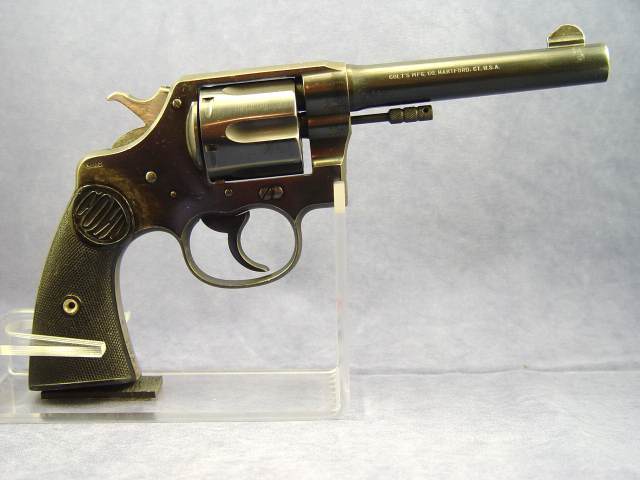
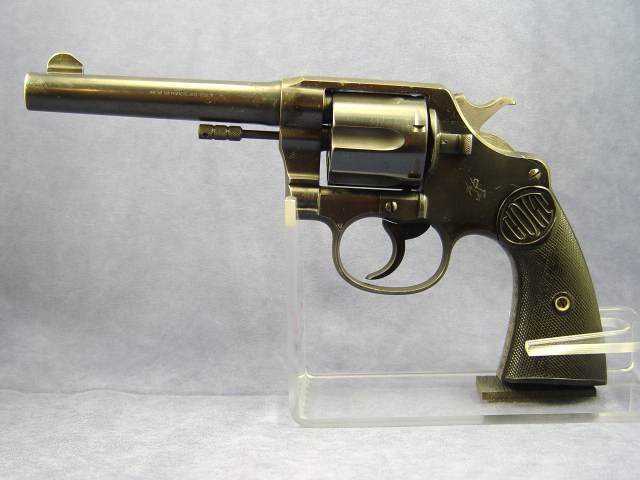
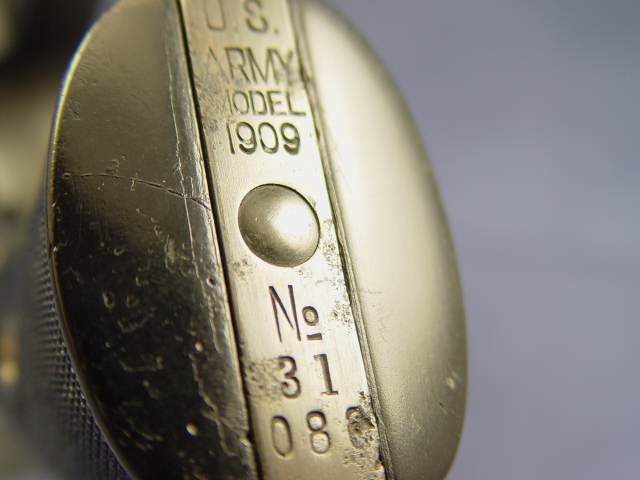
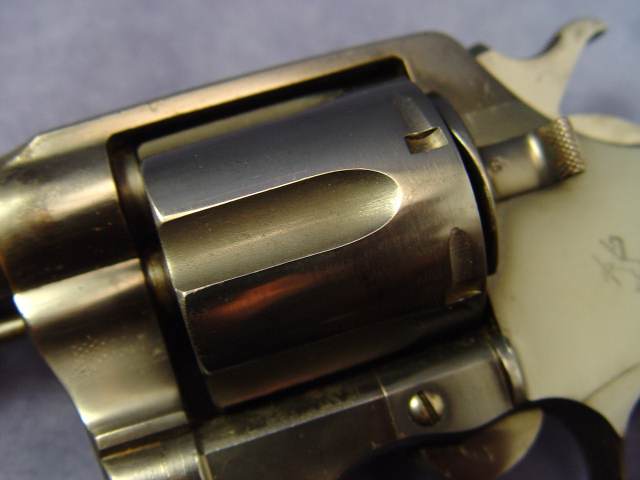
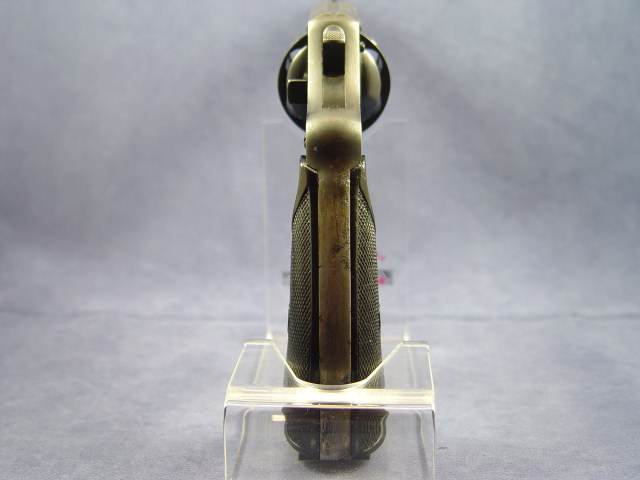
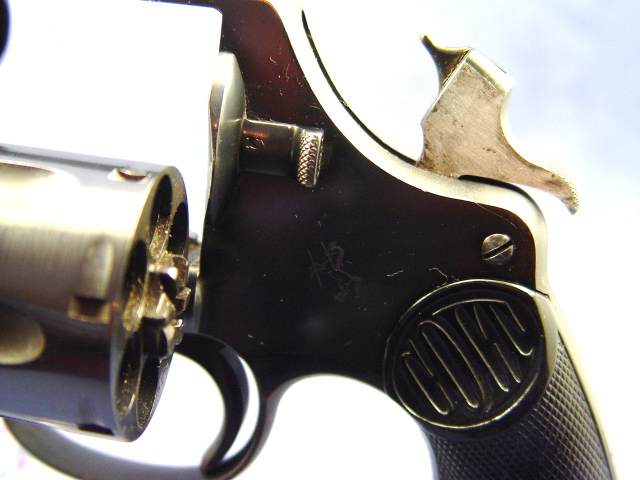
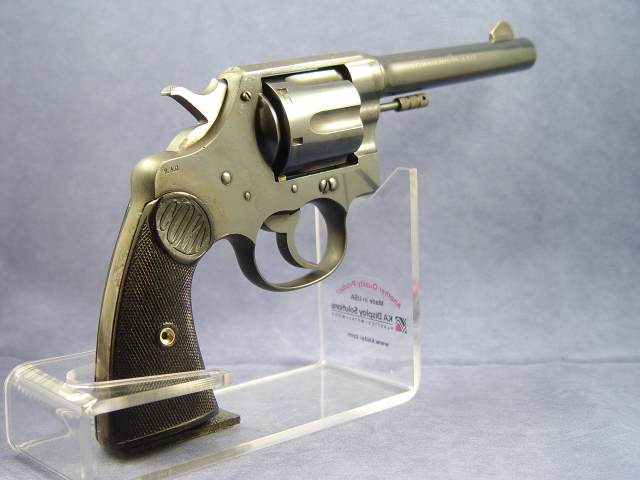
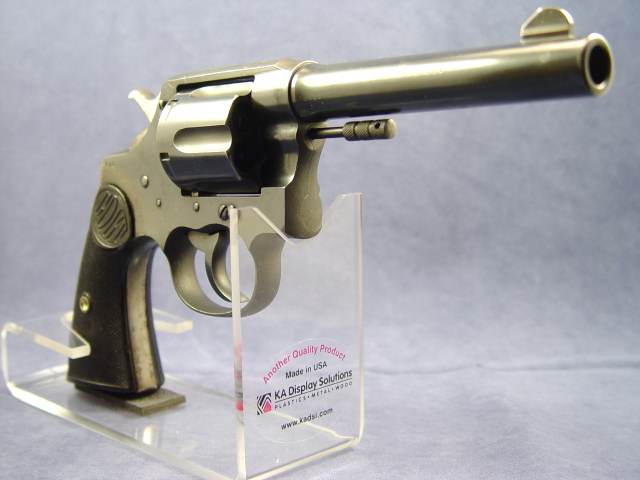
US Army Colt Model 1909.
Records indicate 1911 manufacture.
5 1/2" barrel chambered in 45 Long Colt.
